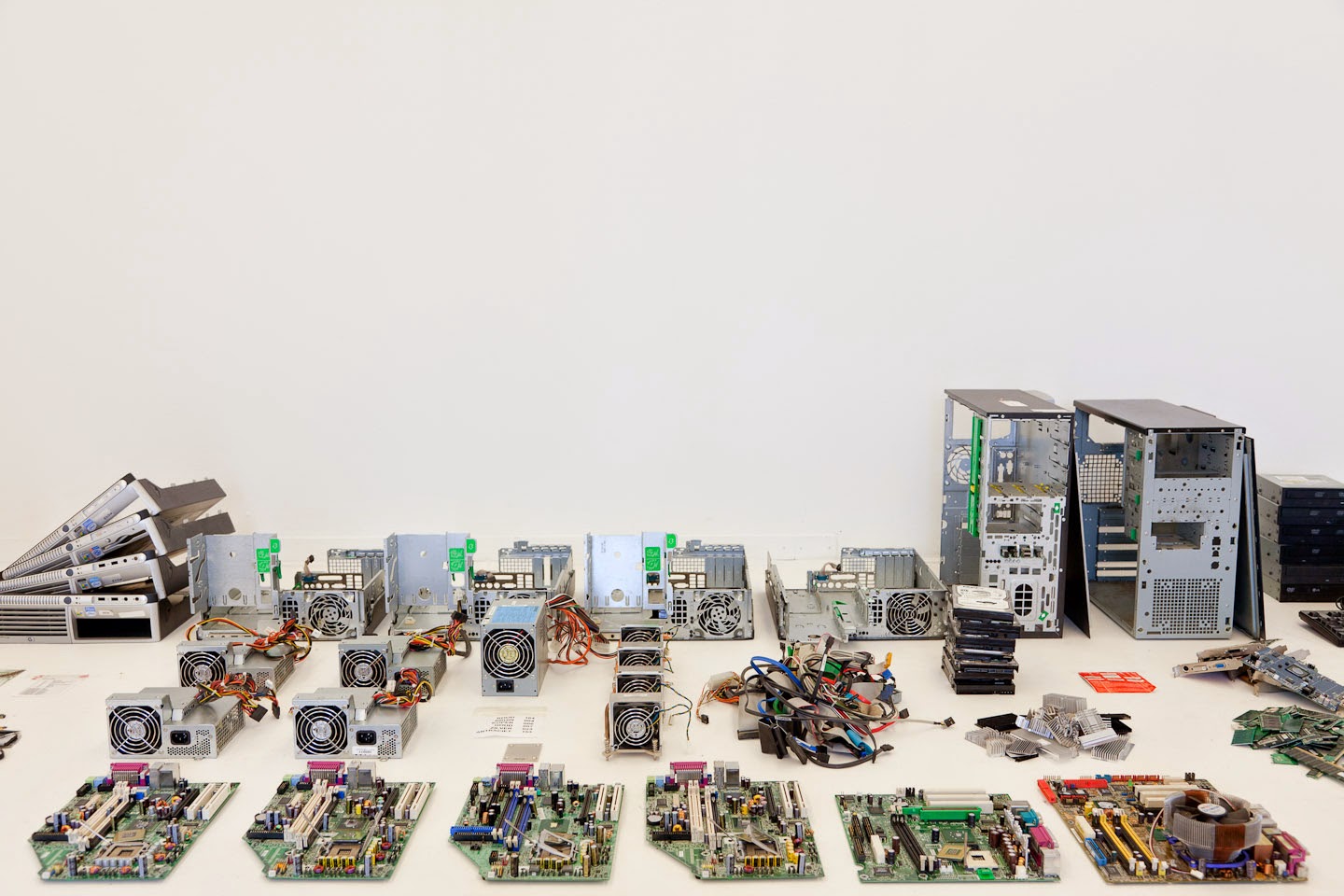 [Image: From “H / AlCuTaAu” by Revital Cohen and Tuur Van Balen].
[Image: From “H / AlCuTaAu” by Revital Cohen and Tuur Van Balen].
For a project called “H / AlCuTaAu”—named after the chemical elements that comprise its final form—artists Revital Cohen and Tuur Van Balen created what they call “an artificial mineral mined from technological artefacts.”
 [Image: From “H / AlCuTaAu” by Revital Cohen and Tuur Van Balen].
[Image: From “H / AlCuTaAu” by Revital Cohen and Tuur Van Balen].
As they explain in the accompanying, very brief artists’ statement, “Precious metals and stones were mined out of technological objects and transformed back into mineral form. The artificial ore was constructed out of gold (Au), copper (Cu), tantalum (Ta), aluminium (Al) and whetstone; all taken from tools, machinery and computers that were sourced from a recently bankrupt factory.”
Of course, our devices have been geology all along—refined aggregates of the Earth’s surface repurposed as commercial properties and given newfound electrical life—but it’s incredibly interesting to reverse-engineer from our phones, circuitboards, and hard drives entirely new mineral compounds.
 [Image: From “H / AlCuTaAu” by Revital Cohen and Tuur Van Balen].
[Image: From “H / AlCuTaAu” by Revital Cohen and Tuur Van Balen].
The project also—albeit in the guise of speculative art—very much implies the future of metal recycling, where our future “mines” are as likely to look like huge piles of discarded electronics as they are to be vast holes in the Earth.
In the same way that some of you might have tumbled rocks on your childhood desks for weeks at a time to scrape, abrade, and polish them down to a sparkling sheen, perhaps the mineworks of tomorrow will be benchtop recycling units extracting rare earth metals from obsolete consumer goods.
Armed with drills and ovens, we’ll just cook our own devices down to a primordial goo that can be selectively reshaped into objects.

 [Images: From “H / AlCuTaAu” by Revital Cohen and Tuur Van Balen].
[Images: From “H / AlCuTaAu” by Revital Cohen and Tuur Van Balen].
You might recall the discovery of so-called “plastiglomerates.” As Science reported last summer, a “new type of rock cobbled together from plastic, volcanic rock, beach sand, seashells, and corals has begun forming on the shores of Hawaii.” Part plastic, part rock, plastiglomerates are the new geology.
Put another way, this is terrestrial science in the age of the Anthropocene, discovering that even the rocks around us are, in a sense, artificial by-products of our own activities, industrial materials fossilized in an elaborate planetary masquerade that now passes for “nature.”
 [Image: A “plastiglomerate”—part plastic, part geology—photographed by Patricia Corcoran, via Science].
[Image: A “plastiglomerate”—part plastic, part geology—photographed by Patricia Corcoran, via Science].
Here, however, in Cohen’s and Van Balen’s work, these new, artistically fabricated conglomerates are more like alchemical distillations of everyday products: phones, radios, and computers speculatively cooked, simmered, bathed, acid-etched, and reworked into an emergent geology.
 [Image: From “H / AlCuTaAu” by Revital Cohen and Tuur Van Balen].
[Image: From “H / AlCuTaAu” by Revital Cohen and Tuur Van Balen].
It is a geology hidden all along in the objects we use, communicate with, and sell, a reduced mineralogy of electronics and machines that will someday form a new layer of the Earth.
(Via The New Aesthetic).
